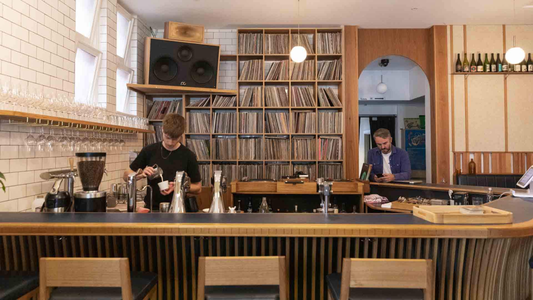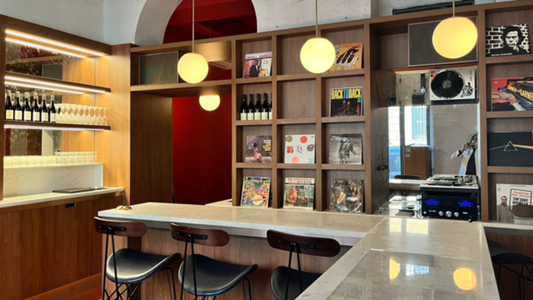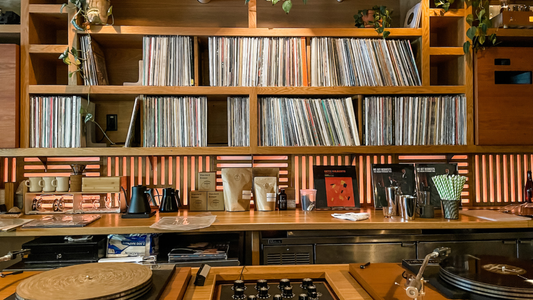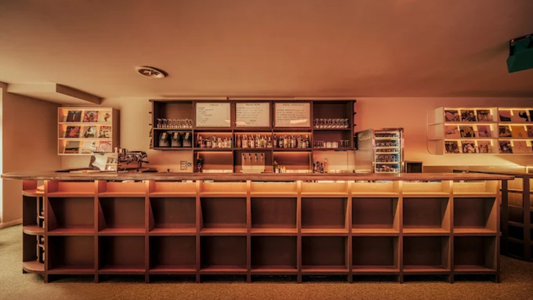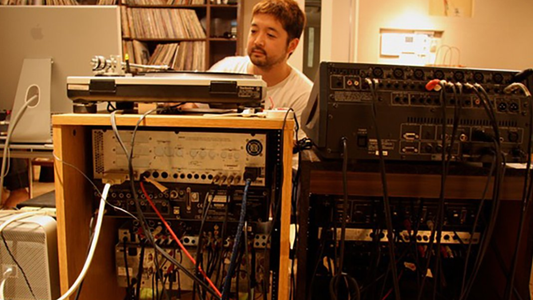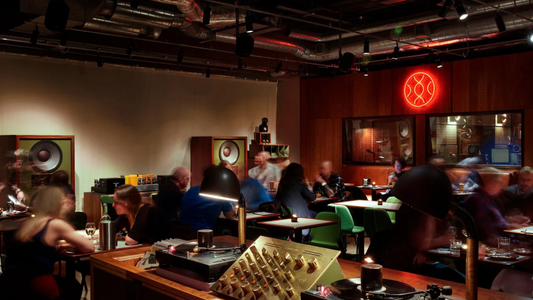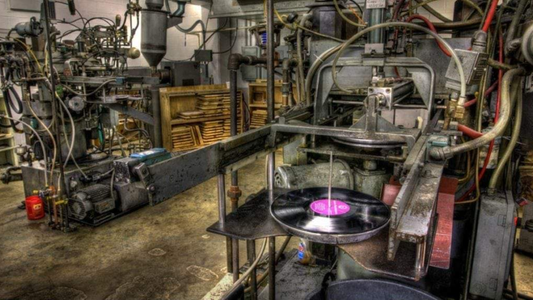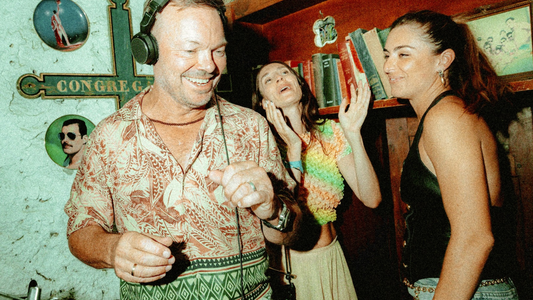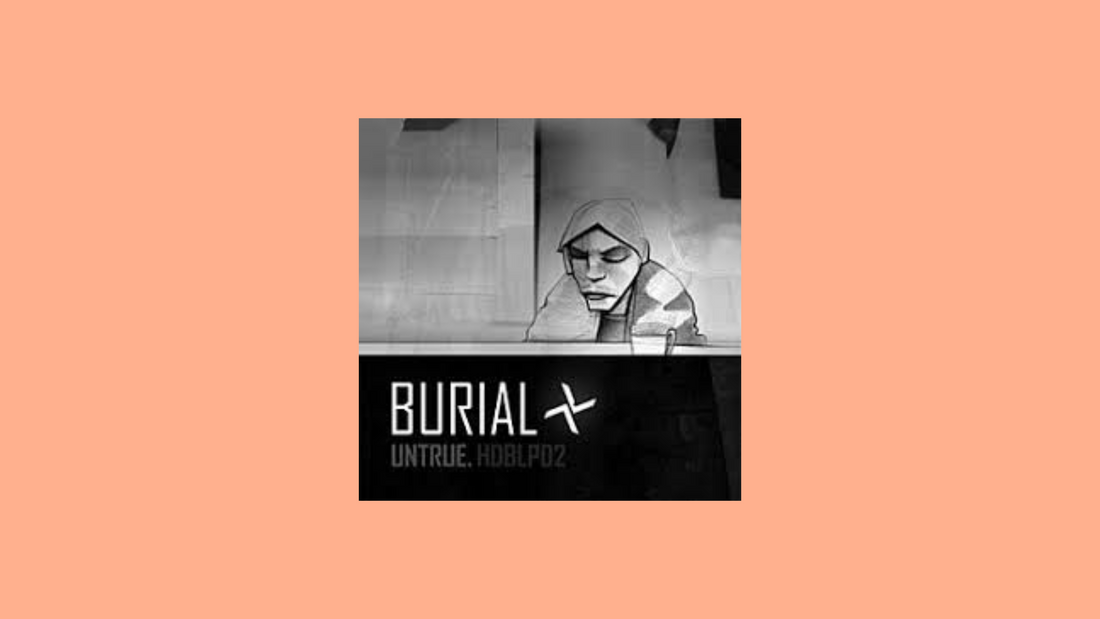
Burial – Untrue (2007)
By Rafi Mercer
It begins like weather: rain on concrete, the hiss of vinyl static, footsteps echoing down an empty corridor. Then a voice — fragile, pitched and stretched until it hovers somewhere between human and ghost. A beat drops, but not with the confidence of a club banger. It stutters, it fractures, it carries air in its spaces. This is Untrue, Burial’s second album, released in 2007. To call it an electronic record is too narrow. It is a portrait of a city at night, a diary of loneliness and longing, a soundtrack to urban solitude.
Burial — the alias of William Bevan — was a near-mythic figure at the time. He refused interviews, avoided photographs, released music anonymously through Hyperdub. In an age of constant exposure, his anonymity was radical. The focus was entirely on the music, and the music sounded like nothing else. Built from chopped vocal samples, crackling textures, and broken two-step rhythms, Untrue drew from garage, jungle, and dubstep but transformed them into something intimate, fragile, human.
The opener, “Archangel,” sets the tone. A vocal sample, pitched into androgyny, repeats like a plea. The beat clicks and cracks, more suggestion than propulsion. It is dance music, but slowed and ghosted, as if heard from outside the club at 3am in the rain. The atmosphere is at once haunting and tender. “Near Dark” follows with similar textures, voices flickering like memories, percussion half-buried in hiss.
Tracks like “Ghost Hardware” and “Raver” play with the language of rave but invert it. The euphoria is gone; what remains is melancholy, the afterglow, the sense of being alone in the crowd. “Etched Headplate” aches with yearning, its voice cut and reshaped into a fragment that repeats until it feels like mantra. “Homeless” carries grit, metallic textures that scrape like night buses and shuttered shops. The closing “Raver” is not an anthem but an elegy, a memory of a night already gone.
What makes Untrue extraordinary is its emotional weight. Electronic music had long been celebrated for energy, for futurism, for rhythm. Burial used the same tools to speak of vulnerability, of intimacy, of loss. His use of vocal samples — stretched, pitched, blurred — turns anonymous fragments into universal emotion. They are not characters; they are feelings, hovering on the edge of recognition. Male becomes female, female becomes male, human becomes ghost. It is a music of liminality, of thresholds.
The textures are equally crucial. Burial layers surface noise, vinyl crackle, the hiss of rain, the hum of the city. These imperfections are not decoration; they are the music. They create space, depth, atmosphere. To listen is to feel as though you are inside a tunnel, or on a late-night bus, or standing under a railway bridge while the world moves above you. It is not polished. It is lived.
The cultural impact was immediate. Untrue became a touchstone not only for dubstep but for electronic music more broadly. It proved that underground genres could carry profound emotion, that anonymity could be powerful in an age of exposure, that imperfections could be beauty. Critics hailed it as a masterpiece, but more importantly, listeners found themselves in it. For many, it was the sound of London itself: rain, darkness, flickering light, fleeting connection.
Yet Untrue is not parochial. Its themes are universal. Anyone who has walked home late at night, headphones on, feeling both connected and alone, knows this sound. Anyone who has longed for something unnamed, felt joy flicker and fade, lived in the tension between intimacy and distance — they hear themselves here. That is why the record resonates across cultures and generations.
For women entering a world often coded as male — bass music, record collecting, club culture — Untrue feels hospitable. Its tenderness resists machismo. Its vulnerability invites empathy. It opens a space where emotion is not weakness but strength, where listening is not competition but connection. Burial made a record that says: you belong here too.
On vinyl, the crackle of the pressing merges seamlessly with the record’s textures, as if it were part of the design. The needle drop sounds like rainfall; the loops breathe like the city itself. The album becomes less a set of tracks than a single environment, a place you can step into for an hour and emerge changed.
Seventeen years on, Untrue has not faded. Its textures remain haunting, its atmosphere potent. If anything, it feels even more resonant in an age of digital polish and hyper-connectivity. It reminds us of the beauty of imperfection, of the poignancy of solitude, of the strange intimacy of listening alone. It is a record that slows you down, asks you to sit with yourself, to hear the echoes in the cracks.
Burial may remain elusive, but Untrue needs no explanation. It speaks directly, in whispers, in echoes, in ghosts. It is music not of spectacle but of presence — fragile, fractured, and utterly human.
Rafi Mercer writes about the spaces where music matters. For more stories from Tracks & Tales, subscribe, or click here to read more.
